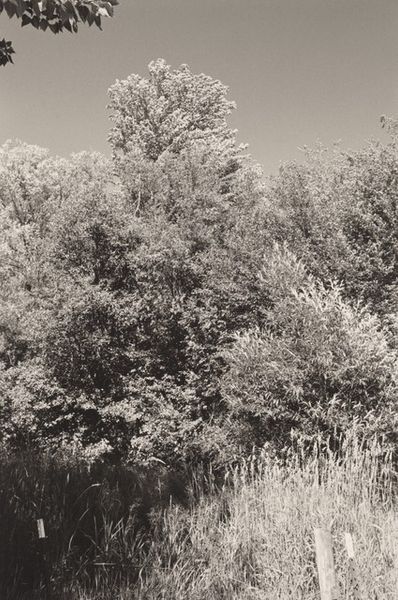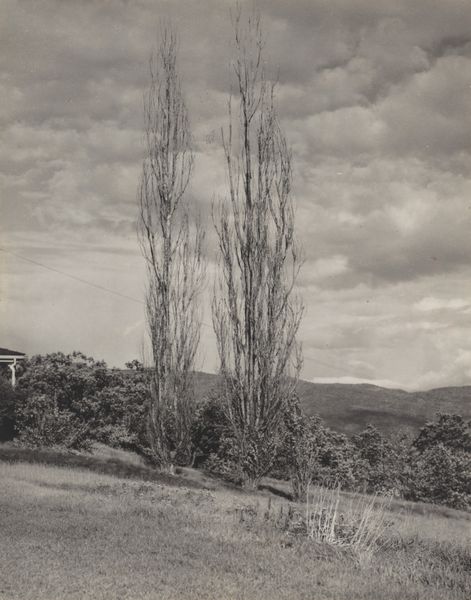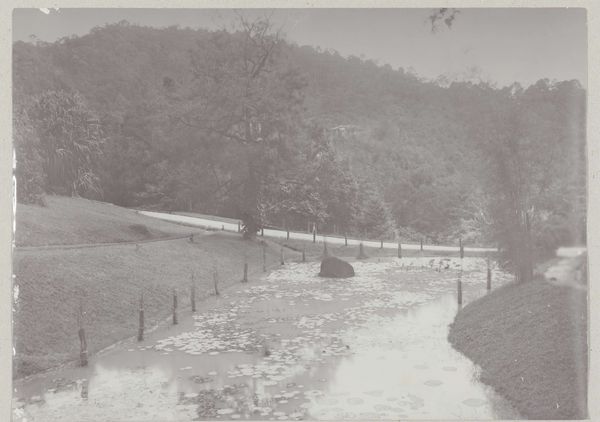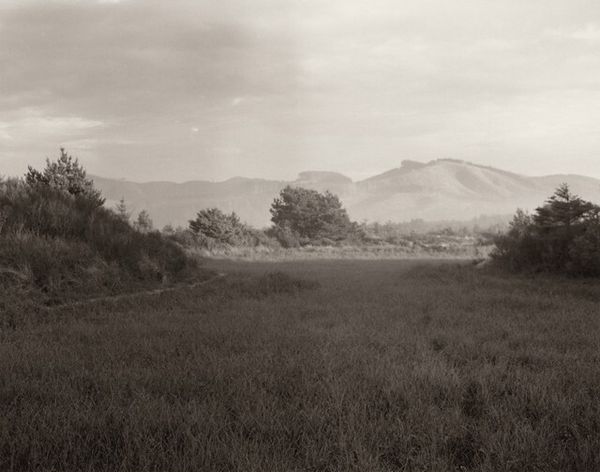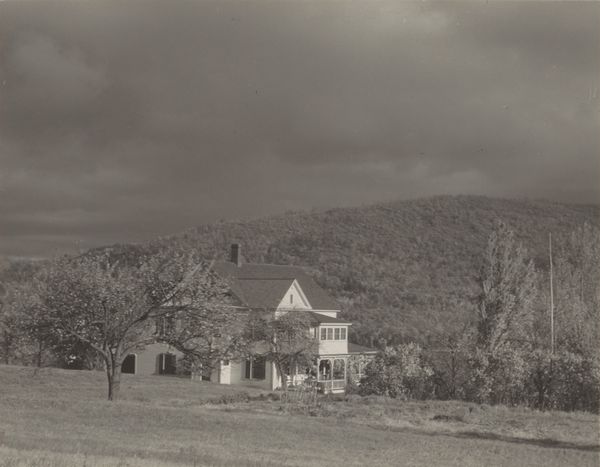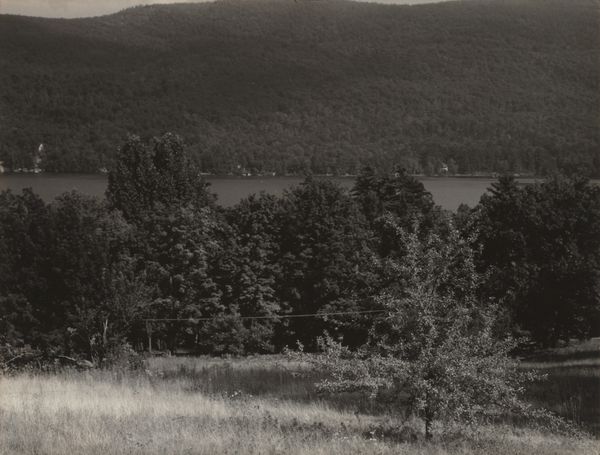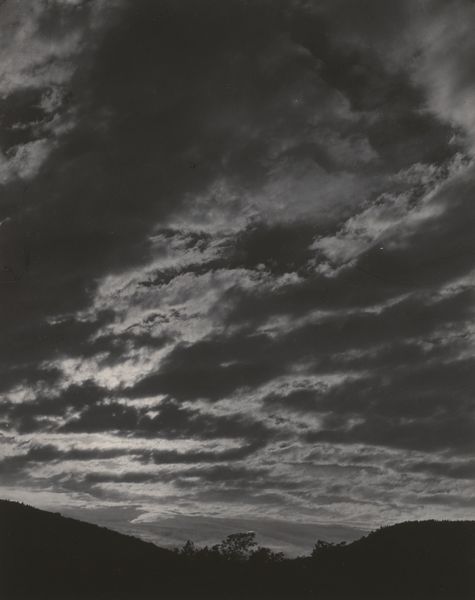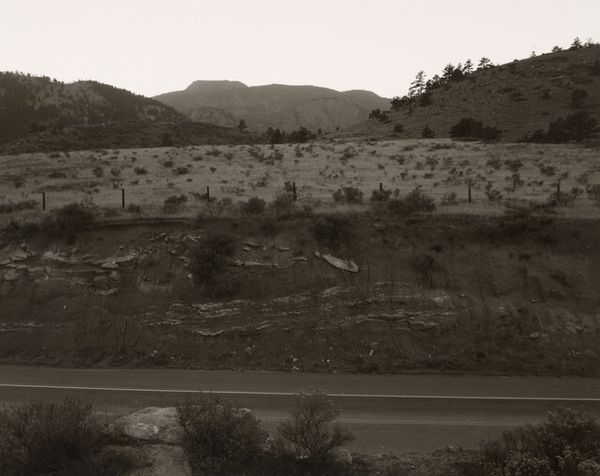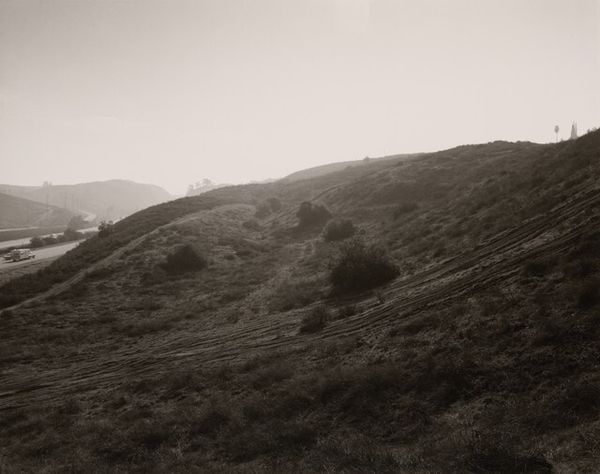
plein-air, photography, gelatin-silver-print
#
photorealism
#
contemporary
#
black and white photography
#
countryside
#
plein-air
#
landscape
#
rural
#
black and white format
#
photography
#
outdoor scenery
#
low atmospheric-weather contrast
#
gelatin-silver-print
#
monochrome photography
#
outdoor activity
#
monochrome
#
realism
#
monochrome
#
shadow overcast
Dimensions: image: 22.8 × 28.6 cm (9 × 11 1/4 in.) sheet: 28 × 35.4 cm (11 × 13 15/16 in.)
Copyright: National Gallery of Art: CC0 1.0
Editor: So, this is Robert Adams' "Baker County, Oregon," from 1999-2003, a gelatin silver print. It feels incredibly still and quiet, almost haunting. What do you make of it? Curator: Let's think about gelatin silver prints as a *process*. It was a relatively accessible medium, right? What does it mean when an artist chooses this seemingly "democratic" process to document… this? Editor: Well, the subject matter seems pretty ordinary: a field, some foliage, a hill in the background. There's nothing obviously grand about it. Maybe that's the point? Curator: Precisely. Consider the historical context. Adams began photographing the American West during a period of intense industrialization and suburban sprawl. He documented the consequences of progress, but often subtly. Where do you see signs of human impact here, in Baker County? Think materially. Editor: I see a fence...and maybe the balls scattered in the field. Are they remnants of something? Are they abandoned? Curator: That’s a sharp observation. These discarded spheres -- what might they *become* in the future, or what are they remnants *of* from the past? Could that signal something about land use, or perhaps agricultural practices in the region at the time? Is he hinting at how land gets commodified? Editor: So, it's not just a pretty landscape, but a commentary on the social and economic forces shaping it, viewed through the lens – quite literally – of material choices and processes. Curator: Exactly. By focusing on seemingly mundane scenes captured through this specific material process, Adams prompts us to examine the very *substance* of our relationship with the environment. It’s not just *what* we see, but *how* it's made visible that carries meaning. Editor: That makes me think differently about photography in general. I usually think about the image first, but the *making* of it definitely adds another layer. Curator: Indeed, it complicates the traditional view and provides new insight.
Comments
No comments
Be the first to comment and join the conversation on the ultimate creative platform.

